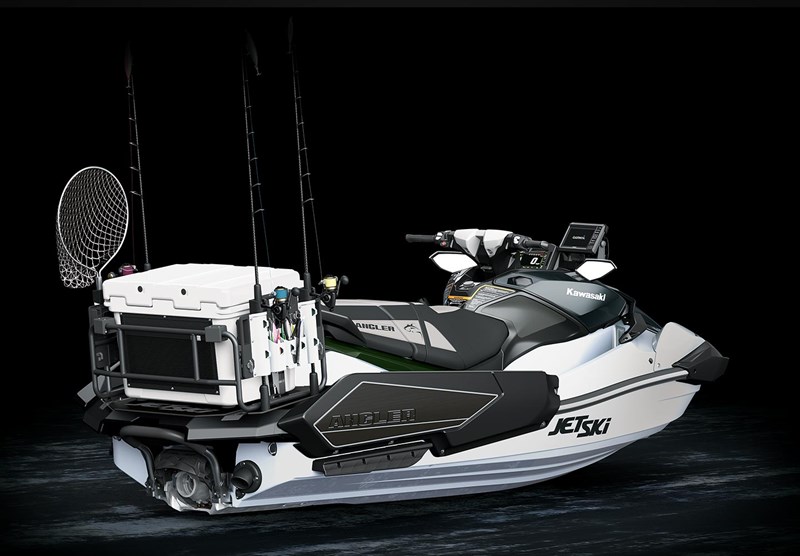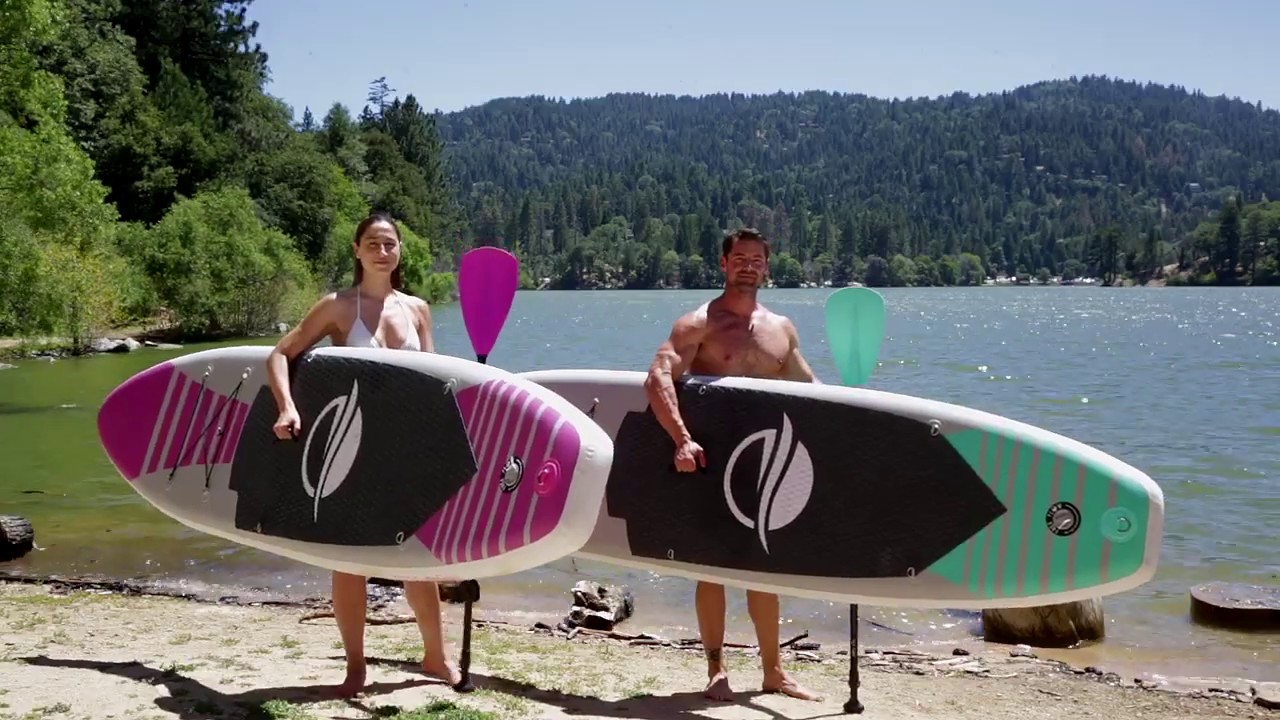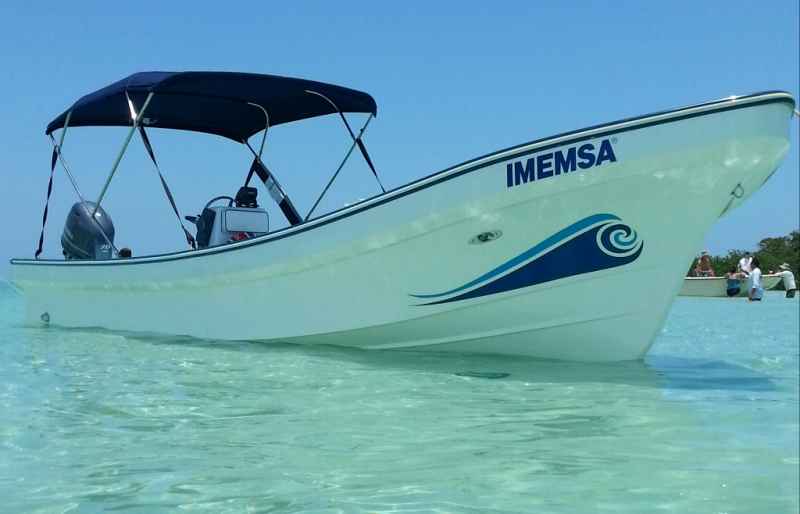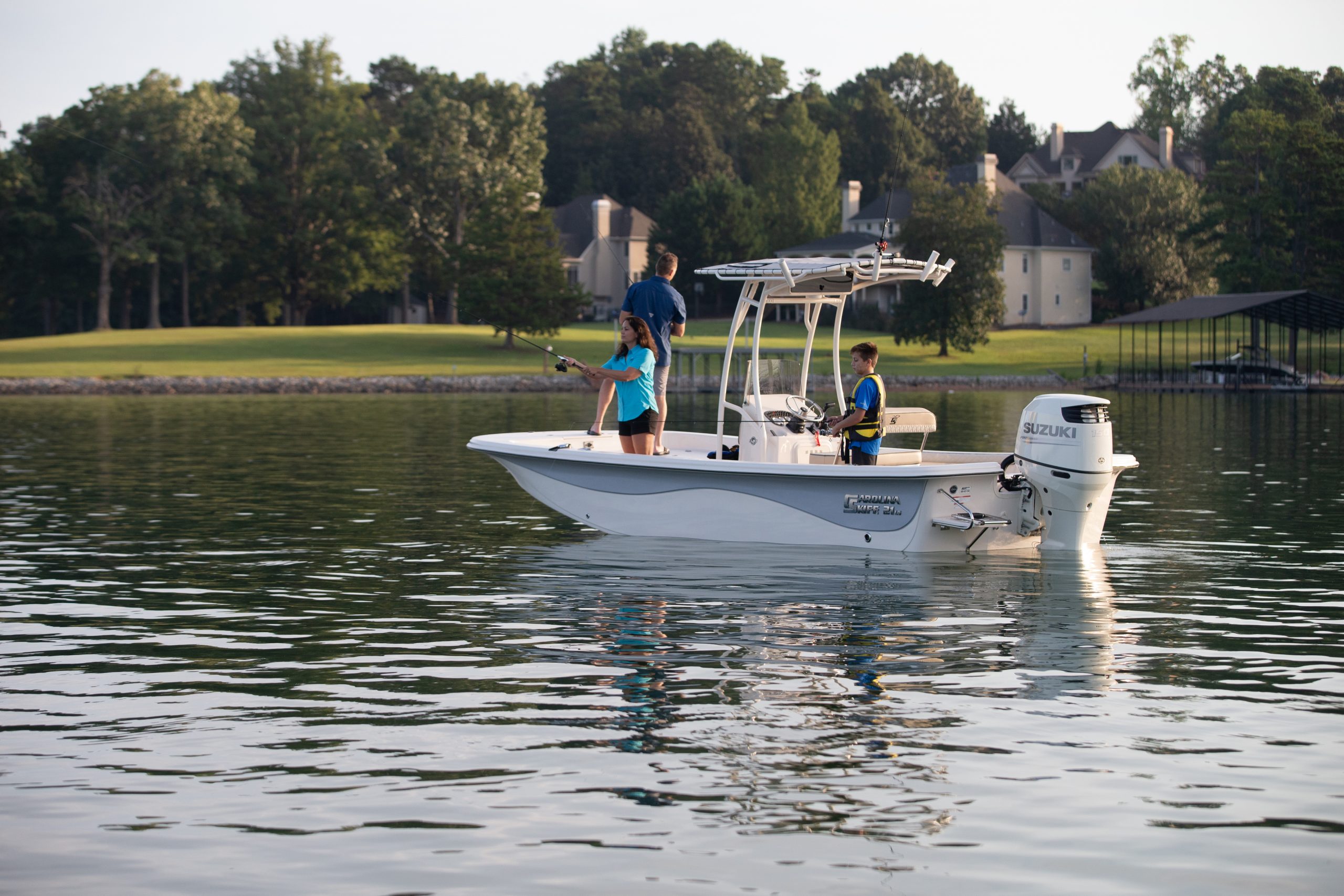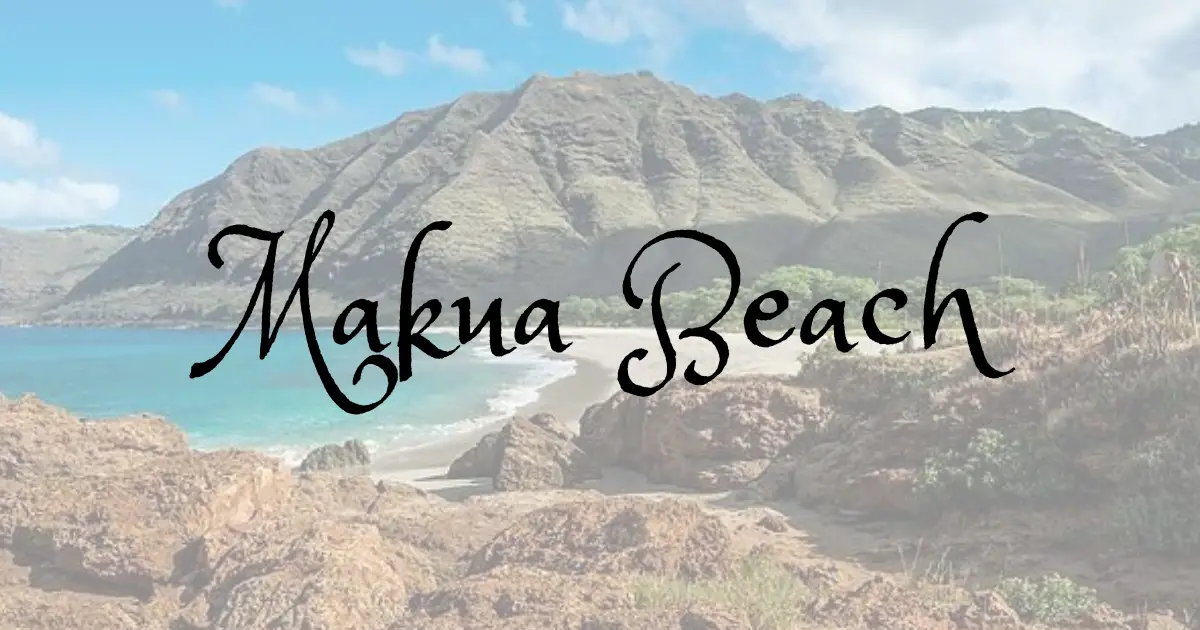Setting Hook Broughtons
As I sit here, tapping away at this keyboard, I can almost taste the salty spray of the sea, feel the cool breeze on my face, and hear the gentle creak of a ship easing its way into the anchorage. I'm here, by proxy, to introduce you to the hardy and adventurous crew of Sea Magazine. A team of seafarers, writers, photographers, and most importantly, storytellers, who are about to embark on a journey to a place where the Pacific Northwest shows its wild, untamed side - the Broughton Archipelago.
You might not know this place. I wouldn't blame you. Tucked away in the glittering seascape of British Columbia, the Broughton Archipelago is a labyrinth of islands, waterways, and hidden coves. It's where the wilderness still feels...wild, and where civilization feels like a far-off concept. It's a place that makes the rest of the world feel irrelevant for a moment, a place that calls to the adventurer in each of us.
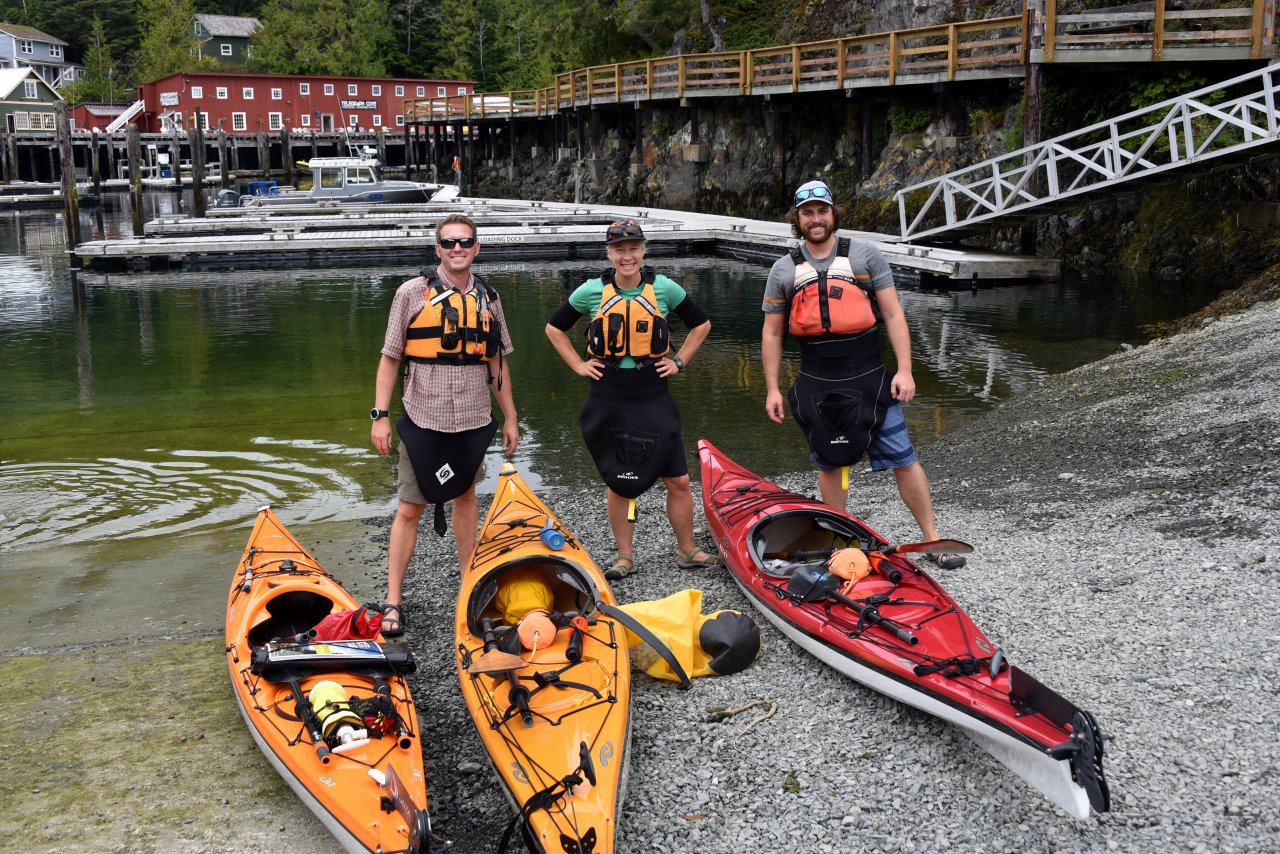
The crew of Sea Magazine will be our eyes and ears, our guides into this maritime Eden. They'll anchor their vessel amidst a constellation of islands, a base camp from where they'll explore the archipelago's deepest secrets. They’ll navigate the waters that have been shaped by millennia, and tread paths beaten by animals and indigenous peoples long before us.
This crew...this team...they have saltwater in their veins, the same sort of wanderlust that drove the likes of Shackleton and Cousteau. They are our conduit to the true essence of the sea - its beauty, its mystery, and its unrelenting reality. They will capture stories that echo the rhythm of the sea, stories that are at times serene, at other times thrilling, but always, always captivating.
So, as we sit in the comfort of our homes, these brave souls are preparing to set off into the vastness of the Broughton Archipelago. They're ready to brave the elements, to witness the awe-inspiring spectacle of nature, and to share their experiences with us. It's a tough job, but then, they're a tough breed.
I invite you to join me, and the team at Sea Magazine, as we venture into the wilds of the Broughton Archipelago. Expect the unexpected, prepare to be astonished, and remember - as with any adventure - it's not just the destination that matters, but the journey.
Now, let's cast off those lines and set sail. The Broughton Archipelago awaits...
And so, as the last tendrils of the mainland disappear behind them, and the vast expanse of the Pacific stretches out before them, the crew of Sea Magazine set their course for the Broughton Archipelago. The anticipation is palpable - the kind you feel when you're on the cusp of something truly extraordinary. It's the kind of feeling that's worth savoring, like the first bite of a well-cooked meal, or the first sip of a vintage wine.
They're a motley crew, but they work together like a well-oiled machine. There's Captain Jim, the grizzled veteran of a thousand sea voyages, with his hand ever steady on the helm. Samantha, the marine biologist, with a penchant for identifying every species of fish they encounter. Then there's Carlos, the photographer, always ready to capture the perfect moment, and Marianne, the writer, weaving tales from the threads of their adventures.
Together, they face the open sea, prepared for whatever it may throw at them. The wind picks up, and the ship cuts through the swells, a plume of spray rising from its bow. The Broughton Archipelago draws closer with each passing moment, a silhouette on the horizon growing larger and more detailed.
The Archipelago is a world of its own. A place where pods of orcas glide through the emerald waters, and bald eagles perch atop towering trees. Where dense, ancient forests meet the sea, and the silence is only broken by the call of a distant raven or the soft splash of a salmon leaping upstream.
They're here to experience it all, to document it, and to bring it to you. To give you a front-row seat to this untouched wilderness, and to show you the beauty of the world that lies beyond the horizon.
But for now, as the sun dips below the horizon, casting long shadows over the water, they drop anchor for the night. As they prepare to rest, the sound of the sea lapping against the hull, and the distant call of wildlife is their lullaby. Tomorrow, the real adventure begins.
I invite you to come along. Experience the wonder. The excitement. The beauty of the Broughton Archipelago through the eyes of our intrepid Sea Magazine crew. Stay tuned, and remember: out here, there are no ordinary days, only extraordinary moments. Let's go find them together.
Broughton Archipelago is a group of islands located at the eastern end of Queen Charlotte Strait in British Columbia, Canada. It is the traditional territory of the Musgamagw Dzawada'enuxw, Namgis, Ma'amtagila, and Tlowitsis nations of the Kwakwaka'wakw peoples. The archipelago is a popular destination for outdoor enthusiasts, offering a wide range of activities such as cruising, kayaking, fishing, hiking, and boating.
The islands in Broughton Archipelago are largely undeveloped and offer a unique opportunity to experience the beauty of the Great Bear Rainforest and its diverse marine life. Visitors can enjoy the scenery and biodiversity of the area while engaging in activities such as wildlife watching, fishing, and hiking. The marine park is also home to a rich First Nations culture, with many opportunities to learn about the history and traditions of the local indigenous people.
Boaters and yachters can refuel in nearby towns such as Telegraph Cove, Alert Bay, Sointula, and Port McNeill on Vancouver Island. The marine park is also a popular destination for those seeking a remote and peaceful getaway. Whether you're looking for an adventure or a relaxing vacation, Broughton Archipelago offers something for everyone.

Getting There
Visiting Broughton Archipelago is an adventure that requires a bit of planning. The archipelago is located between Vancouver Island and the mainland of British Columbia, offshore from Telegraph Cove. Access to the marine park is by boat only, from Telegraph Cove, Alert Bay, and Port McNeill on Vancouver Island. Visitors can also fly to Port McNeill and take a water taxi or charter a boat to the archipelago.
By Boat
Boating is the most popular way to get to Broughton Archipelago. Visitors can choose to bring their own boats or rent them from local companies in Port McNeill, Alert Bay, and Telegraph Cove. Powell River is another popular starting point for boaters who want to explore the archipelago.
There are several routes to cruise to or from the Broughtons, depending on wind and weather conditions. The express route heads north to Campbell River; transit Seymour Narrows at slack tide and cruise up Discovery Passage and Johnstone Strait to Havannah Channel. Another popular route starts at Johnstone Strait and around Hansen Island through Blackney Pass to Blackfish Sound.
By Air
Visitors can fly to Port McNeill, which has a small airport with regular flights from Vancouver and other major cities in British Columbia. From there, visitors can take a water taxi or charter a boat to the archipelago.
Chartering a seaplane or helicopter is another option for visitors who want to arrive in style. Several companies offer scenic flights over the archipelago, providing a bird's-eye view of the stunning landscape.
Regardless of how visitors choose to get there, they should make sure to check the weather and tides before embarking on their journey. The waters around Broughton Archipelago can be unpredictable, and it's important to be prepared for changing conditions.

Anchorages
The Broughton Archipelago offers a variety of anchorages for boaters to choose from. Here are some of the popular anchorages in the area:
Echo Bay
Echo Bay is a popular anchorage located on the east side of Gilford Island. The bay is well-protected and offers good holding ground. There is a marina and a small store in the bay, which makes it a convenient place for boaters to stop and restock.
Sullivan Bay
Sullivan Bay is another popular anchorage in the Broughton Archipelago. It is located on the east side of Kwatsi Bay and offers good protection from the wind and waves. The bay has a marina with moorage, fuel, and a small store.
Waddington Bay
Waddington Bay is a large bay located on the west side of East Cracroft Island. It is a popular anchorage for boaters because of its good holding ground and protection from the wind and waves. The bay has a small beach and a waterfall that can be accessed by dinghy.
Berry Island
Berry Island is a small island located on the east side of Queen Charlotte Strait. It offers several good anchorages, including Farewell Harbour, which is a popular spot for boaters to anchor. The harbour has good holding ground and offers protection from the wind and waves.
Eden Island
Eden Island is a small island located on the east side of Queen Charlotte Strait. There are several good anchorages around the island, including Joe Cove, which is a popular spot for boaters to anchor. The cove is well-protected and has good holding ground.
Crease Island
Crease Island is a small island located on the east side of Queen Charlotte Strait. There is a good anchorage on the southeast side of the island that offers protection from the wind and waves. The anchorage has good holding ground and is a popular spot for boaters to anchor.
Baker Island
Baker Island is a small island located on the west side of Queen Charlotte Strait. There is a good anchorage on the east side of the island that offers protection from the wind and waves. The anchorage has good holding ground and is a popular spot for boaters to anchor.
When anchoring in the Broughton Archipelago, it is important to be aware of the tidal currents. The currents can be strong in some areas and can affect the holding ground of your anchor. It is also important to be respectful of the environment and other boaters in the area.

Wildlife
Broughton Archipelago is a wildlife haven, home to numerous species of marine animals and birds. Visitors can experience the beauty of nature by observing the wildlife in their natural habitat. Here are some of the most notable species that can be found in the area:
Bears
Broughton Archipelago is home to both black bears and grizzly bears. These majestic creatures can often be seen foraging for food along the shoreline and in the forested areas of the islands.
Dolphins
Pacific white-sided dolphins are a common sight in the waters surrounding the archipelago. These playful mammals often swim alongside boats, jumping and playing in the waves.
Orcas
Orcas, also known as killer whales, are perhaps the most iconic of all the marine mammals in the area. These majestic creatures can often be seen hunting for salmon in the waters around the islands.
Seabirds
Broughton Archipelago is home to a wide variety of seabirds, including puffins, cormorants, and bald eagles. These birds can be seen soaring overhead or perched on the rocky cliffs of the islands.
Harbour Seals
Harbour seals are a common sight in the waters around Broughton Archipelago. These curious animals can often be seen poking their heads above the water to get a better look at passing boats.
Sea Lions
Steller sea lions are another common sight in the waters around the archipelago. These massive animals can often be seen sunning themselves on the rocky shores of the islands.
Bald Eagles
Bald eagles are a common sight in the skies above Broughton Archipelago. These majestic birds of prey can often be seen swooping down to catch fish in the waters below.
Humpback Whales
Humpback whales are a common sight in the waters around the archipelago. These massive creatures can often be seen breaching the surface of the water, their tails flapping in the air.
Salmon
Broughton Archipelago is home to a variety of salmon species, including Chinook, Coho, and Sockeye. These fish are an important food source for many of the marine mammals in the area.
Fishing
Fishing is a popular activity in Broughton Archipelago. Visitors can try their luck at catching salmon, halibut, and other species of fish in the waters around the islands.
Marine Mammals
Broughton Archipelago is home to a wide variety of marine mammals, including whales, dolphins, seals, and sea lions. Visitors can observe these animals in their natural habitat, either from the shore or from a boat.
Killer Whales
Killer whales, also known as orcas, are perhaps the most iconic of all the marine mammals in the area. These majestic creatures can often be seen hunting for salmon in the waters around the islands.

Exploring the Archipelago
Broughton Archipelago is a stunning wilderness area consisting of a maze of several small islands, numerous islets, and adjacent foreshore at the southern extremity of Queen Charlotte Strait, off the mouth of Knight Inlet and west coast of Gilford Island. It is a perfect destination for outdoor enthusiasts looking to explore the natural beauty of British Columbia's coast. Here are some of the best ways to explore the archipelago.
Kayaking
Kayaking is one of the most popular ways to explore the archipelago. The calm, sheltered waters of the area make it an ideal place for kayaking. Visitors can paddle through the maze of islands and islets, enjoying the stunning scenery, and spotting wildlife such as seals, sea lions, and bald eagles. Kayak rentals and guided tours are available from various outfitters in the area.
Hiking
Hiking is another great way to explore the archipelago. There are numerous trails on the islands that offer stunning views of the surrounding water and forests. Visitors can hike to the top of Mount Addenbroke on Malcolm Island or explore the old-growth forests on Eden Island. The trails range from easy to challenging, so there is something for everyone.
Petroglyphs
The archipelago is home to several petroglyphs, which are ancient rock carvings created by First Nations people. Visitors can see petroglyphs on the islands of Turnour, Village, and Quadra. These carvings offer a glimpse into the rich history and culture of the First Nations people who have lived in the area for thousands of years.
First Nations Culture
The archipelago is also a great place to learn about First Nations culture. Visitors can visit the nearby Kwakwaka'wakw village of Alert Bay, which is home to the U'mista Cultural Centre. The centre houses a collection of First Nations artifacts and offers guided tours of the nearby village.
Villages
There are several small villages in the archipelago that offer a glimpse into the local way of life. Sullivan Bay is a popular destination for boaters, with a marina, general store, and restaurant. Port Neville is another small village that offers moorage and a small store. Visitors can also explore the Village Channel, which is home to several small First Nations communities.
Overall, the archipelago offers a wealth of opportunities for outdoor enthusiasts and those interested in First Nations culture. Whether you want to kayak through the islands, hike through the forests, or learn about the local culture, there is something for everyone in this stunning wilderness area.

Broughton Archipelago Marine Provincial Park
Broughton Archipelago Marine Provincial Park is British Columbia's largest marine park, consisting of a collection of dozens of undeveloped islands and islets at the mouth of Knight Inlet on the west side of Queen Charlotte Strait near the north end of Vancouver Island. It is situated approximately 30 km east of Port McNeill and is accessible only by boat.
The park offers a stunning natural setting for outdoor enthusiasts, with a wide variety of activities available, including kayaking, fishing, camping, and wildlife viewing. The park is home to a diverse range of marine life, including orcas, humpback whales, dolphins, porpoises, sea lions, seals, and otters. The park also has a rich cultural history, with evidence of First Nations settlements dating back thousands of years.
Visitors to the park can explore the many islands and islets, which offer a range of landscapes, from rocky shorelines and secluded coves to lush forests and sandy beaches. The park's waters are excellent for kayaking, with calm waters and sheltered bays providing ideal conditions for paddling. Visitors can also fish for salmon, halibut, and other species in the park's waters.
Camping is available at several locations throughout the park, including at Farewell Harbour, which offers a range of amenities, including hot showers, laundry facilities, and a general store. Visitors can also stay at one of the park's many wilderness campsites, which offer a more rustic camping experience.
Overall, Broughton Archipelago Marine Provincial Park is a must-visit destination for anyone interested in exploring British Columbia's stunning natural beauty. With its undeveloped islands, diverse marine life, and rich cultural history, the park offers a unique and unforgettable experience for visitors of all ages and interests.

Weather and Conditions
Broughton Archipelago is known for its unpredictable weather conditions, which can change rapidly. Visitors are advised to check the weather forecast before heading out to the park. The park is located in a temperate rainforest, and the weather can be wet and windy. However, visitors can also experience sunny and warm weather during the summer months.
Winds
Strong winds can occur in the park, especially during the winter months. The prevailing winds are from the southeast, but winds from other directions can also occur. Visitors should be aware of the wind direction and strength when boating or kayaking in the park. Winds can create choppy water conditions and make it difficult to navigate.
Tides
The tides in the park can be strong and unpredictable. Visitors should be aware of the tide tables and plan their activities accordingly. The tidal range can be up to four meters, which can create strong currents and whirlpools. Visitors should be cautious when boating or kayaking during the tidal changes.
Fog
Fog can occur in the park, especially during the summer months. Visitors should be prepared for reduced visibility when boating or kayaking in foggy conditions. Fog can also make it difficult to navigate on foot, especially on the rocky terrain.
Rock Wall
The park is known for its unique rock wall, which is a popular destination for rock climbers. Visitors should be aware of the weather conditions before attempting to climb the wall. Rain can make the wall slippery and dangerous to climb.
Sheltered Waters
The park has many sheltered waters, which provide a safe haven for boaters and kayakers during windy and rough conditions. Visitors should be aware of the sheltered water areas and plan their activities accordingly. The sheltered waters are also a great place to explore and observe the park's wildlife.
Overall, visitors should be prepared for changing weather conditions when visiting Broughton Archipelago. It is important to check the weather forecast and plan activities accordingly. Visitors should also be aware of the park's unique conditions, such as strong winds, tides, and fog, and take precautions when boating, kayaking, or climbing.

Trip Itineraries
The Broughton Archipelago is a stunning destination that offers a variety of trip itineraries to suit different preferences. Visitors can choose from sailboat tours, kayaking expeditions, and stand-up paddleboarding trips.
Sailboat tours are a popular option for those who want to explore the archipelago while enjoying the comfort of a fully-equipped vessel. These tours typically last between 5 to 7 days and take visitors through the islands of Gilford, Malcolm, and Cormorant. Along the way, visitors can expect to see a range of wildlife, including orcas, humpback whales, dolphins, and sea lions. They can also visit ancient village sites, explore the ancient rainforest of the mainland, and relax on white shell beaches.
Kayaking expeditions are a great way to experience the Broughton Archipelago up close. These trips range from 3 to 7 days and take visitors through the maze of islands, islets, and coves. Kayakers can expect to see a variety of marine life, including seals, otters, and porpoises. They can also explore the rugged coastline, visit First Nations communities, and camp on secluded beaches.
Stand-up paddleboarding trips offer a unique way to explore the Broughton Archipelago. These tours last between 4 to 6 days and take visitors through the calm waters of the archipelago. Paddleboarders can expect to see a range of wildlife, including eagles, bears, and whales. They can also explore the hidden coves and bays of the archipelago, visit First Nations communities, and camp on remote beaches.
Overall, the Broughton Archipelago offers a range of trip itineraries to suit different preferences. Whether visitors prefer to sail, kayak, or paddleboard, they are sure to have an unforgettable experience exploring the islands of Gilford, Malcolm, and Cormorant.
Charlie is Editor-in-Chief of Sea Magazine
